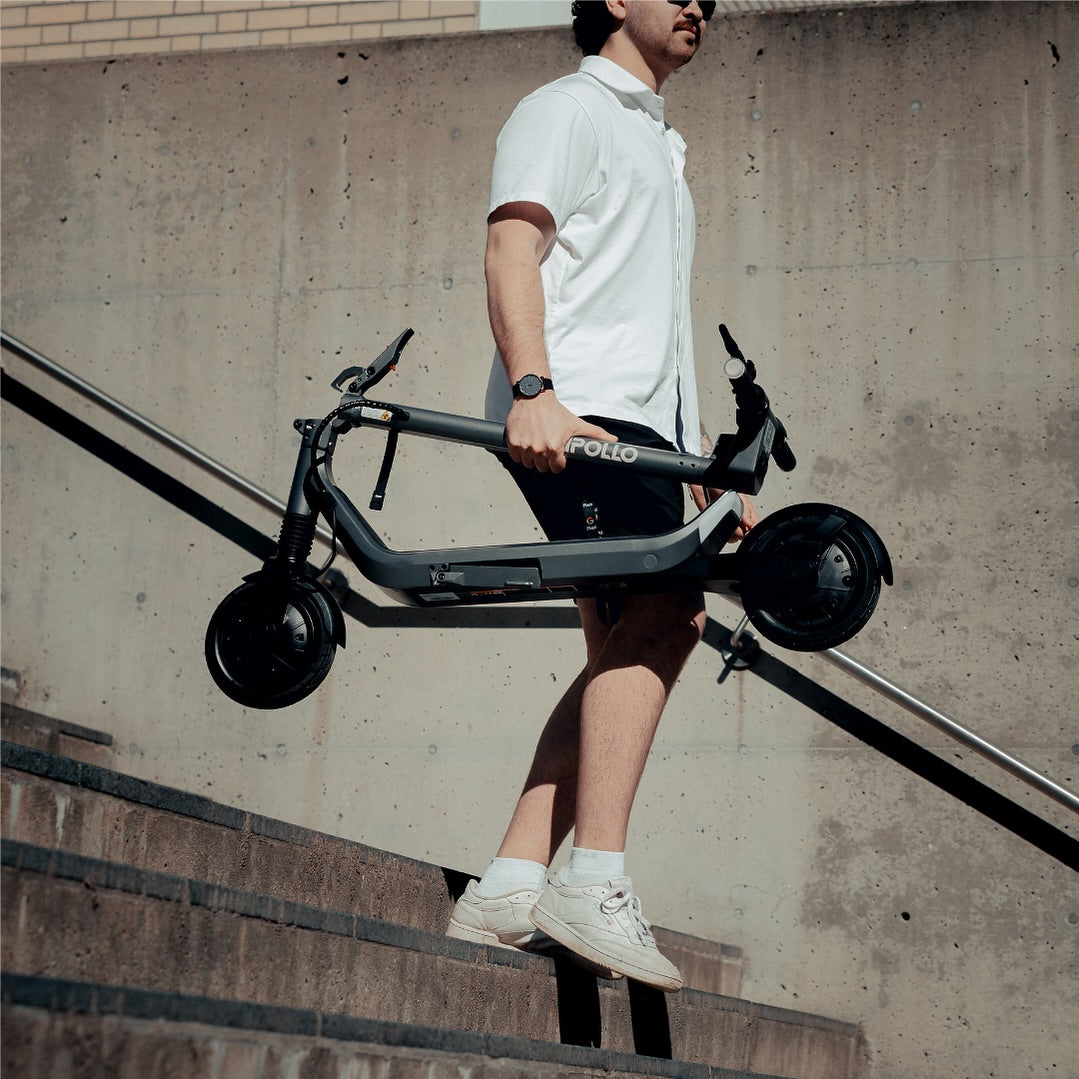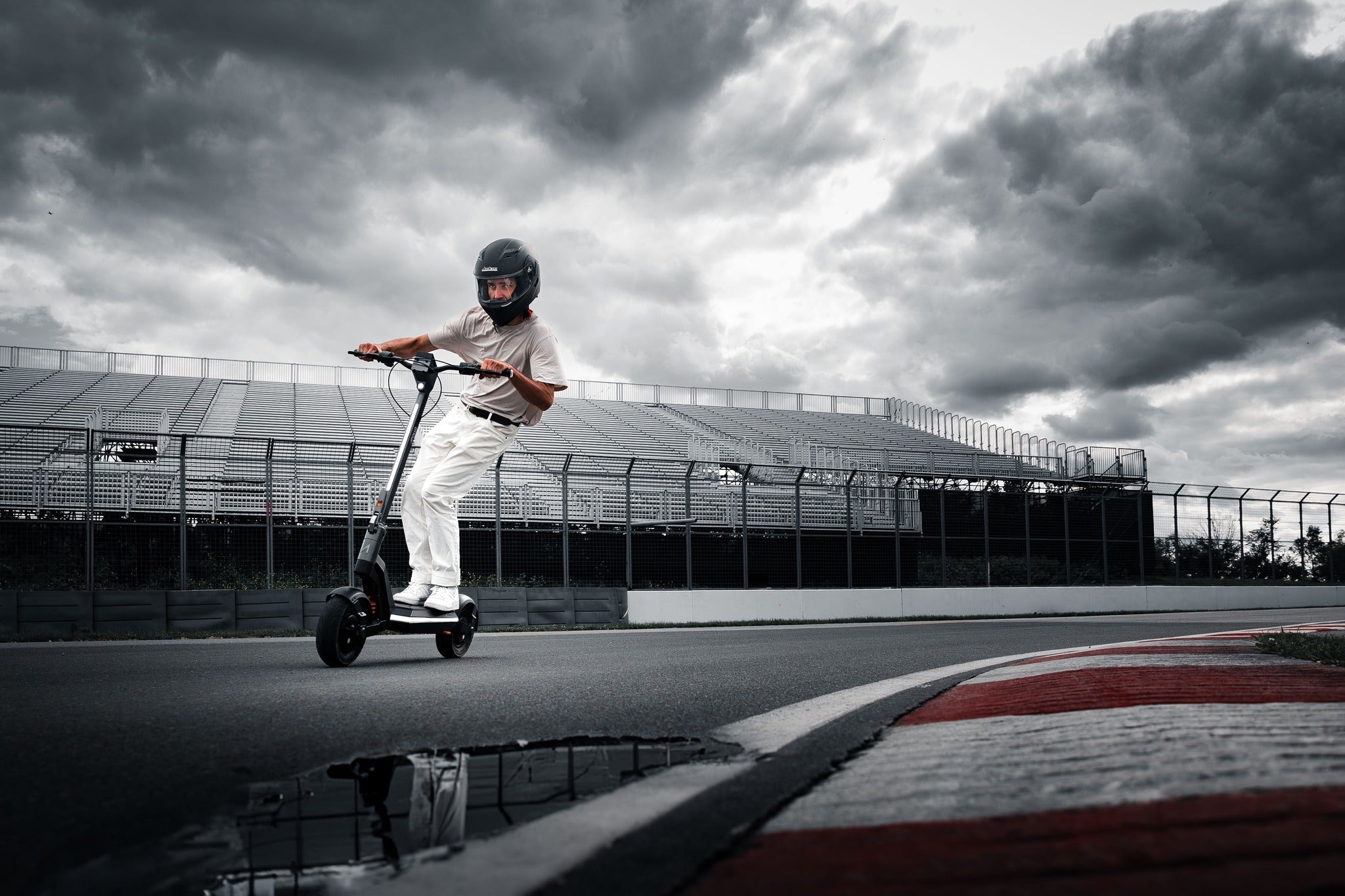First long trip on an electric scooter, huh? You don't have to worry about it. Here's an ultra-helpful guide to what you should remember about and how to prepare yourself. A good plan is half the battle, the other half is the equipment, but I'm guessing you already have an electric scooter, so after reading this article you will be fully prepared.

Essential tips you need to know before your journey
Planning an electric scooter trip, especially for a weekend getaway, requires more than just hopping on your scooter and heading out. To ensure a smooth and enjoyable experience, it’s crucial to prepare adequately. Here are the essential tips you need to know before embarking on your electric scooter journey:
Understanding your scooter's capabilities and limitations
Before setting off, it's important to familiarize yourself with the specific capabilities and limitations of your electric scooter. Each model, such as the Apollo Air, Apollo Go, or Apollo City, offers different features that can significantly affect your journey. Key aspects to consider include:
-
Battery life and range: Determine the maximum distance your scooter can travel on a single charge under various conditions. Factors such as rider weight, average speed and terrain can affect how far you can travel on an electric scooter. For instance, long distance scooters designed for commuters might offer a range of 15-30 miles, but this can vary widely.
-
Motor power and speed: The power of the motor affects how well your scooter can handle inclines and rough terrain. A more powerful motor can maintain speed on hills and provide a smoother ride, which is crucial for longer journeys.
- Terrain compatibility: Check if your scooter is designed for urban environments or more rugged, off-road conditions. The type of tires, suspension system, and ground clearance are important factors to consider for different terrains.
Pre-trip maintenance and checks
Ensuring your scooter is in top condition is vital for a safe and enjoyable trip. Regular maintenance not only extends the life of your scooter but also enhances safety and performance. Key maintenance tasks include:
- Tire inspection and pressure: Properly inflated tires improve ride efficiency and safety. Check for any signs of wear or damage and ensure they are inflated to the manufacturer's recommended pressure.
- Electric scooter battery health: Charge your battery fully before the trip and consider carrying a charger or an extra battery if your scooter supports it. Regularly check for any signs of battery degradation, such as reduced range or longer charging times.
- Brake system check: Test both front and rear brakes to ensure they are responsive. The rear disc brake lets you stop when you need to. Look for any unusual noises or reduced braking power, and get on with these issues before hitting the road. During long trips there is a very useful braking system that has the function of recovering energy during braking. It’s called RBS.
- Lighting and visibility: Ensure that all lights, including headlights, taillights, and indicators, are functioning properly. Good lighting is essential for visibility, especially if your journey includes night riding.
Find out more: Electric Scooter Camping 101: Everything You Need to Know for an Epic Trip
The truth about the range of electric scooters: How far can you travel on an electric scooter?
Understanding the range of your electric scooter is crucial for planning any journey, whether it's a short commute or a weekend getaway. Electric scooter range determines how far you can travel before needing to recharge.
The most important factors affecting the range of your electric scooter
Battery capacity and type
The battery is the heart of your scooter's range. Typically measured in watt-hours (Wh), the capacity dictates how much energy the battery can store. For instance, a scooter with a 500Wh battery can generally travel further than one with a 300Wh battery. Additionally, the type of battery—such as lithium-ion—also plays a role in performance and durability. Lithium ion batteries are the best options, although they are expensive.Rider weight and load
Heavier riders or those carrying extra baggage will notice a decrease in range. This is because the motor has to work harder to propel the additional weight, consuming more energy in the process. For example, if a scooter is rated for a maximum range of 20 miles under ideal conditions, a heavier load could reduce this range by up to 20-30%.Speed and riding style
Riding at higher speeds consumes more battery power. A smooth, steady pace is more efficient than rapid accelerations and frequent stops. Many scooters offer eco or energy-saving modes that limit top speed and acceleration, which can help extend the range.Terrain and inclines
Flat terrain allows for maximum efficiency, while hills and rough surfaces require more energy, reducing range. For example, a scooter might achieve its maximum range on flat city streets but see a significant reduction when used on hilly or uneven terrain.Weather conditions
Cold weather can decrease battery efficiency, thereby shortening the range. Extreme cold or heat can lead to reduced capacity and performance. Additionally, who likes to drive in severe cold and freeze one’s tail off. Tire pressure and type
Properly inflated tires reduce rolling resistance, which helps maximize range. Under-inflated tires increase resistance and energy consumption. Additionally, solid tires may offer less rolling resistance than air-filled tires, but the latter can provide better shock absorption and comfort.Use of accessories
Additional accessories like lights, speakers, or even mobile phone chargers can draw power from the battery, thus reducing the overall range.Planning charging stops during your electric scooter trip
For longer trips, especially those exceeding your scooter's single-charge range, planning charging stops is essential. Here’s how to effectively plan for recharging:
- Map out charging locations Before setting out, identify potential charging locations along your route. This could include public charging stations, cafes, restaurants, or even friendly businesses that might allow you to plug in. Websites and apps like PlugShare can help locate these spots.
- Understand your charging time Know how long it takes to recharge your scooter's battery fully. Some scooters, like the Apollo City 2024, might offer fast charging options, reducing downtime. However, even with fast charging, plan for breaks of 30 minutes to an hour, depending on the battery size and the remaining charge.
- Carry a portable charger If possible, carry a portable charger to use whenever you stop, whether it's for a meal or a rest. This can be particularly useful if your trip takes you through areas with limited charging infrastructure.
- Battery swapping options For scooters that allow it, carrying an extra battery can effectively double your range without needing to stop for a charge. This is a practical solution for trips where access to charging stations is limited or non-existent.
- Optimize battery use To conserve energy, use energy-saving modes when possible and avoid unnecessary acceleration. Also, make use of regenerative braking features if your scooter has them, as these can help recover some energy while braking.
Helpful tips for a smooth and enjoyable scooter weekend
Planning a weekend getaway on an electric scooter can be a delightful experience, combining the freedom of travel with the joy of exploring new places. To ensure your trip is both safe and enjoyable, it’s important to prepare thoroughly. Here are some expert tips to help you get the most out of your scooter weekend.

Safety tips for long electric scooter rides
Safety should always be a top priority when planning any journey, especially on an electric scooter. Here are some essential safety tips to keep in mind for long rides:
1. Wear appropriate safety gear
Helmet: A helmet is a non-negotiable piece of safety equipment. It protects you from head injuries in the event of a fall or collision. Choose a helmet that fits well and meets safety standards, such as the DOT or CPSC certification in the U.S.
Protective clothing: Consider wearing additional protective gear such as gloves, elbow pads, and knee pads. These can help prevent injuries in case of a fall. Reflective clothing or vests are also recommended to enhance visibility, especially if you’re riding in low-light conditions.
2. Know and follow local traffic laws
Familiarize yourself with the traffic laws and regulations for electric scooters in the areas you plan to visit. These can vary widely between cities and states, covering aspects such as speed limits, where you can ride (bike lanes vs. roads), and helmet requirements.
Always adhere to traffic signals and signs, and practice defensive riding by being aware of your surroundings and anticipating potential hazards.
3. Plan your route carefully
Choose routes that are suitable for scooters, ideally with dedicated bike lanes or less congested roads. Avoid high-traffic areas where possible, as navigating through dense traffic can be risky.
Consider the terrain and elevation changes. Steep hills can be challenging and may require more power, impacting your scooter’s range. Flat routes are generally safer and easier to manage.
4. Stay visible and communicate
Make yourself as visible as possible to other road users. Use your lights, wear bright or reflective clothing, and use hand signals to indicate turns.
Use a bell or horn to alert pedestrians or other riders of your presence, especially in crowded or shared spaces.
5. Ride smart and stay alert
Avoid distractions while riding, such as using your phone. If you need to check a map or make a call, pull over to a safe spot first.
Stay hydrated and take regular breaks. Fatigue can impair your concentration and reaction time, increasing the risk of accidents.
What is the longest journey on an electric scooter? Journey without preparation
Electric scooters enthusiasts often push the boundaries of their devices to see how far they can go on a single charge or over multiple days. Attempting a long journey on an electric scooter without preparation can be both thrilling and challenging. While it’s possible to cover significant distances, a lack of planning can lead to unexpected hurdles, such as finding charging stations or dealing with adverse weather. It is worth equipping yourself with additional accessories. In your journey, an Apollo handlebar extender will be useful, to attach an additional lamp or a phone with navigation. Scooter model should be chosen to suit your needs. If you are a fan of long journeys, bet on a high-end electric scooter with a long range.



















